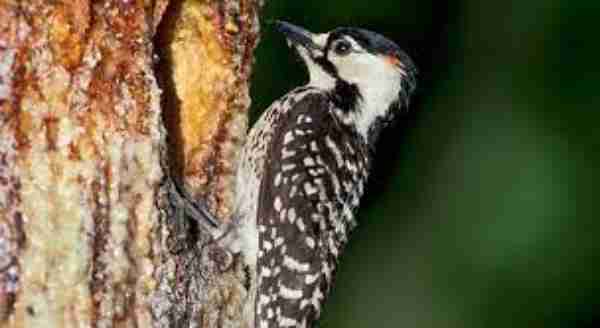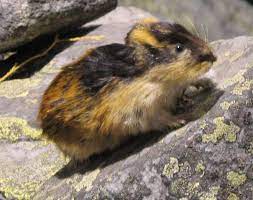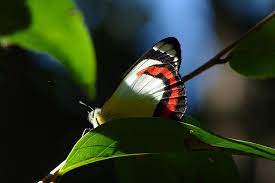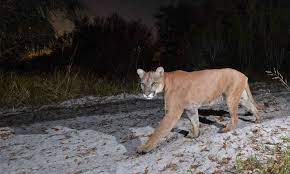Florida, known for its sun-soaked beaches and diverse wildlife, once hosted a cast of magnificent creatures that roamed its landscapes and waters, only to fade into the annals of extinction. The rich and varied ecosystems of Florida were once home to a range of fascinating animals, each uniquely adapted to this vibrant subtropical paradise.
From awe-inspiring mammals to giant reptiles, the extinct animals of Florida tell a tale of changing landscapes and the relentless passage of time. In this expedition through history, we delve into the vanished world of prehistoric and recent past, uncovering the stories of these vanished beings that once thrived in the Sunshine State. Join us as we unearth the fossils, trace the footprints, and peer into the past to pay homage to the remarkable extinct animals that once graced the lands we now call Florida.
Table of Contents
Overview of Florida’s Unique Ecosystems and Wildlife:
Florida, characterized by its diverse ecosystems, encompasses a vast array of wildlife. From the intricate wetlands of the Everglades to the sprawling coastline, this state is a haven for biodiversity. The Everglades, a UNESCO World Heritage Site, is a distinctive wetland system and home to a plethora of species, including alligators, manatees, and the elusive Florida panther.
The coastal areas are frequented by nesting sea turtles, while the extensive swamps and forests harbor a variety of birds and mammals. Florida’s unique blend of ecosystems creates a delicate balance that has been home to countless species, some of which have regrettably slipped into the shadows of extinction.
Caribbean Monk Seal (Neomonachus tropicalis):

The Caribbean monk seal, once a resident of Florida’s coastal waters and other parts of the Caribbean, is now officially declared extinct, with the last confirmed sighting dating back to the 1950s. Habitat destruction, hunting for their blubber, and human disturbance significantly contributed to their demise.
These seals were known for their curious and docile nature, making them susceptible to human interactions. Overfishing, loss of breeding grounds, and disease also played a role in their decline. Despite occasional sightings reported in the early 2000s, no concrete evidence of their existence emerged, leading to their tragic classification as extinct. The loss of the Caribbean monk seal underscores the urgency of conservation efforts to protect the world’s remaining marine species and habitats.
Ivory-billed Woodpecker (Campephilus principalis):

The ivory-billed woodpecker, although not officially declared extinct, is considered critically endangered and possibly extirpated from Florida. Once known for its distinctive appearance with a striking ivory-colored bill, this magnificent bird faced habitat destruction as vast forests were cleared for agriculture and logging.
Their elusive nature and remote habitat made accurate population assessments challenging. Despite reported sightings, confirming their continued existence remains elusive. Extensive searches and conservation efforts are crucial to determine their current status and prevent the potential loss of this iconic woodpecker. The potential extinction of the ivory-billed woodpecker highlights the broader issue of habitat preservation and the need for urgent action to protect and restore natural ecosystems.
Florida Black Wolf (Canis lupus floridanus):

The Florida black wolf, a subspecies of the gray wolf, once roamed the diverse landscapes of Florida. Historically, it was believed to be prevalent in the state’s forests and wetlands. However, due to habitat loss and the human perception of wolves as threats to livestock and humans, they were hunted relentlessly. By the early 20th century, the Florida black wolf was hunted to extinction.
The last confirmed sighting of this subspecies in Florida dates back to the 1920s. The loss of the Florida black wolf is a somber reminder of the devastating impacts of overhunting and habitat destruction, emphasizing the importance of conservation efforts to protect endangered species and restore natural ecosystems.
Florida Bog Lemming (Synaptomys borealis evotis):

The Florida bog lemming, a subspecies of the northern bog lemming, was native to Florida’s wetlands. However, this subspecies has not been recorded since the early 20th century, and it is presumed to be extinct. Habitat destruction, drainage of wetlands for agriculture, and human encroachment into their habitats likely contributed to their disappearance.
The lack of recent sightings and the loss of suitable habitats are indicative of the challenges faced by many small mammals in an increasingly altered and fragmented environment. The extinction of the Florida bog lemming underscores the fragility of specialized habitats and the urgent need for comprehensive conservation strategies to protect vulnerable and endangered species.
Atala Butterfly (Eumaeus atala):

The Atala butterfly once believed to be extinct in Florida, experienced a resurgence following its rediscovery in the 1950s. This striking butterfly showcases a unique pied pattern with vibrant blue and black wings. The Atala butterfly’s decline was primarily due to habitat destruction and overcollection for the pet trade. The loss of its larval host plant, the coontie (Zamia integrifolia), was a significant factor.
Efforts to reintroduce and cultivate coontie plants have aided in the recovery of the Atala butterfly population. Conservation initiatives focusing on habitat restoration and public awareness have been instrumental in saving this visually captivating butterfly from the brink of extinction. The Atala butterfly’s journey from near extinction to a symbol of successful conservation demonstrates the potential for human intervention to safeguard endangered species.
Florida Grasshopper Sparrow (Ammodramus savannarum floridanus):

The Florida grasshopper sparrow, native to the dry prairies of Florida, is critically endangered and on the verge of extinction. Factors such as habitat loss, fire suppression, and the invasion of non-native grasses have severely impacted their populations. Urbanization and agriculture have further reduced their habitat, pushing them closer to extinction.
Conservationists and researchers are working tirelessly to protect and restore their remaining habitats, implement controlled burns to replicate natural prairie conditions, and establish captive breeding programs to bolster their dwindling numbers. The fight to save the Florida grasshopper sparrow is a poignant example of the urgent need for habitat conservation and species-focused initiatives to prevent the irreversible loss of biodiversity.
Florida Panther (Puma concolor coryi):

The Florida panther, a subspecies of the mountain lion, once roamed across the southeastern United States. However, due to extensive hunting, habitat loss, and fragmentation, their population sharply declined, pushing them to the brink of extinction. By the 1970s, only a few individuals remained, prompting conservation efforts to save this majestic big cat.
The population has since slightly rebounded, but it remains critically endangered with a small, isolated population in the southern part of Florida. The construction of roads, habitat fragmentation, and genetic issues due to a small gene pool threaten their long-term survival. Ongoing conservation initiatives, habitat protection, and genetic diversity management are crucial to ensuring the survival and recovery of the Florida panther.
Causes of Extinction:
The extinction of animals in Florida, as in other regions, can be attributed to various factors. Habitat loss due to urbanization and human encroachment has significantly impacted the native fauna. Pollution, climate change, and invasive species have also played pivotal roles in the decline of certain animal populations. Overhunting and overfishing, especially during the early years of colonization, pushed several species to the brink. Understanding these causes is crucial to formulating effective conservation strategies.
Unique Ecosystems and Habitats:
Florida’s ecosystems are extraordinarily diverse, encompassing wetlands, forests, seashores, and more. The mangrove forests along the coastlines provide vital habitats for many marine and terrestrial species. The seagrass beds in coastal waters serve as nurseries for marine life. The Florida Reef, the only barrier coral reef system in the continental United States, supports an abundance of marine organisms. Preserving these unique ecosystems is essential for conserving the remaining wildlife and restoring lost biodiversity.
Modern-Day Conservation Efforts:
Modern conservation efforts in Florida are multifaceted and dynamic. Various governmental and non-governmental organizations are actively involved in habitat restoration, wildlife monitoring, and conservation programs targeting endangered species. The establishment of protected areas and conservation corridors aims to restore fragmented habitats and allow wildlife to thrive. Additionally, strict regulations and enforcement against poaching and illegal trade contribute to species preservation.
The Role of Education and Awareness:
Education and awareness are paramount in ensuring the long-term conservation of Florida’s wildlife. Public awareness campaigns, school programs, and community engagement initiatives play a crucial role in educating people about the importance of biodiversity and the need for conservation. Understanding the value of native species and their habitats fosters a sense of responsibility towards their protection.
Possible Future Reintroduction Efforts:
Reintroduction programs present a hopeful path for reviving extinct or severely endangered species in Florida. Advances in conservation biology and genetic technologies provide opportunities for carefully planned and monitored reintroduction efforts. Restoring habitats and addressing the factors that led to extinction will be essential prerequisites for the success of these programs.
Final Words:
Florida’s story of extinct animals is a stark reminder of the delicate balance between humans and nature. It underscores the urgency to prioritize conservation efforts, advocate for sustainable practices, and cherish the rich tapestry of biodiversity that defines this beautiful state. By learning from the past and working collectively towards a sustainable future, we can strive to prevent further extinctions and foster a harmonious coexistence with the remarkable wildlife of Florida.
Reference:
- https://www.floridamuseum.ufl.edu/100years/tag/extinct-species/
- https://www.biologicaldiversity.org/news/press_releases/2011/florida-extinct-species-10-05-2011.html
- https://www.newscientist.com/article/dn21407-pythons-hunt-florida-mammals-to-brink-of-extinction/

Zahra Makda
Growing up enjoying the beauty of my village, a good passion for nature developed in me from childhood. Following my passion for the natural world, I have chosen zoology for my graduation, during my undergraduate degree, I participated in many nature trails, bird watching, rescues, training for wildlife conservation, workshop, and seminars on biodiversity. I have a keen interest in invertebrate biology, herpetology, and ornithology. Primary interests include studies on taxonomy, ecology, habitat and behavior.









